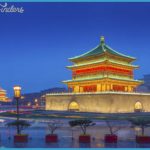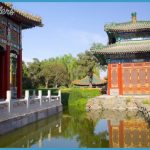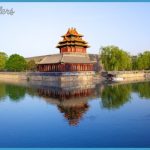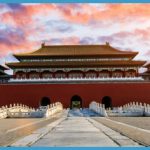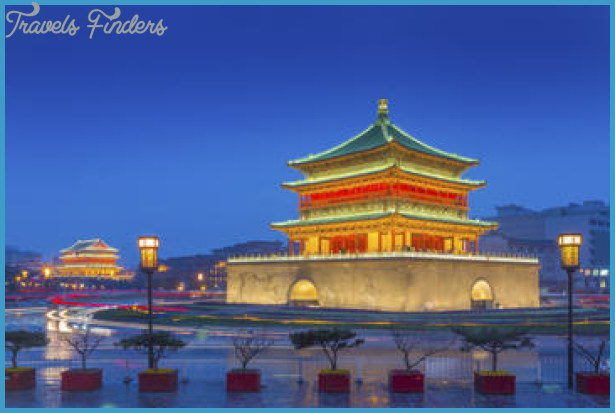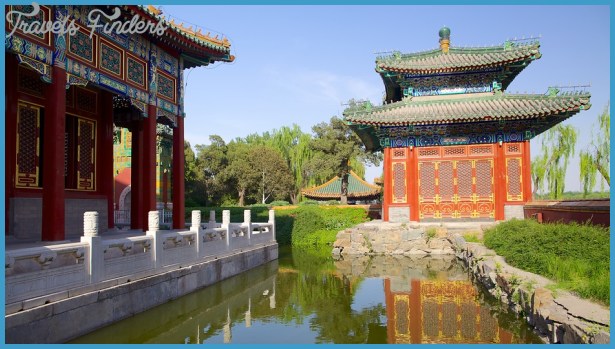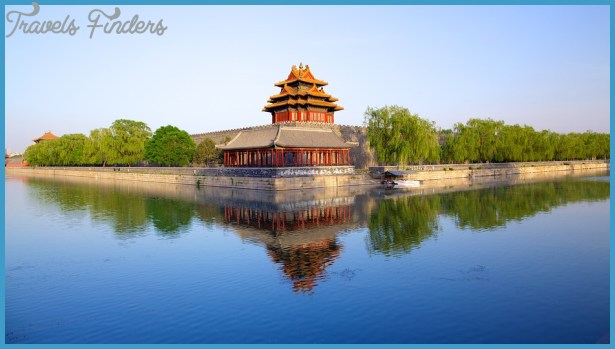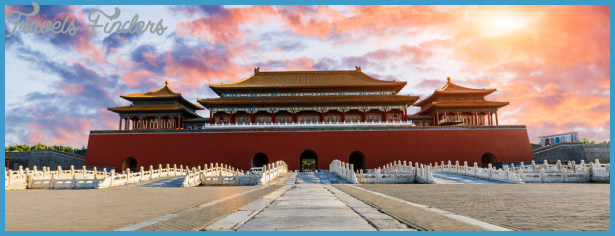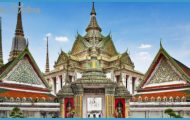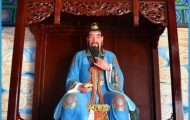Continuing along the Long Corridor towards the west we arrive at the House called Hearthe Golden Orioles, where theatrical performances were previously held and which today is a restaurant.
At the end of the Long Corridor is the Marble Ship also called Qingyan Fang. The base is of marble and the upper part of wood; two stone wheels also protrude from the construction. The ship is ironic evidence of the fact that Empress Cixi used the funds which were intended to modernise the imperial fleet to renovate her private residence.
From this point the South Lake Island can be reached, either by ferryboat or in the south-west on foot over the Seven-arched Bridge (Shiqikong Qiao). This bridge was built over a hundred years ago, and is the longest bridge on the lake, measuring 150m/164yd. Worth noting are the 150 lions on the railings, all of which are carved differently. In front of the bridge stands a bronze ox, which supposedly fends off the water demon.
The 200ha/543 acre lake is fed by spring water. It was originally only a pool, but Emperor Qianlong had it enlarged in order to carry out naval exercises here in the summer. Bridges and dams subdivide the lake into several sections.
On the South Lake Island stands the Temple of the Dragon King (Long-wang Miao).
The Western Dyke (Xidi) connects the north-west part of the park with the south. The dyke and its six bridges including the lovely arched Jade Belt Bridge (Yudai Qiao), are reproductions of the Su-Dongpo Dam in the Hangszhou West Lake.
On the eastern foot of Hill of Longevity, hidden in an out-of-the-way corner, is the Garden of Harmony and Pleasure. This “garden in a garden” was laid out in 1751 and modelled on a private park in Wuxi; it was renovated in 1811. There is a lotus pond surrounded by covered paths and buildings.
To the west of the park are the Pavilion of Joy and Farming (Lenong Xuan), the Pavilion of Long Life (Yiahou Tang) and an observatory tower (Jingfu Ge).
The Garden of Perfection and Light, the so-called Old Summer Palace, is to be found 500m/550yd from the New Summer Palace. The building of the 350ha/864 acre complex began in 1709. This complex consists of three sections the Garden of Perfection and Light, the Garden of Eternal Spring (Changchun Yuan), and the Garden ofthe Beautiful Spring (Qichun Yuan). The Emperor Qianlong engaged the Jesuit Giuseppe Castiglione from 1747 until 1760 to build European style palaces. In 1860 the complex was destroyed in a matter often days by British and French troops and finally, at the suggestion of the British, it was set on fire. The imperial family began restoring the complex, although they had to stop again because of insufficient funds being available. Furthermore, the stones were used by the Chinese for housebuilding. Today real effort is being put into the restoration work.
The gardens used to be characterised by lakes, intertwined watercourses, and man-made hills and also numerous^alaces and pavilions. There are still small traces ofthe European style palaces (Xiyang Lou) to be seen.
A small exhibition provides information on the history of the complex and a model conveys an impression its former glory.

